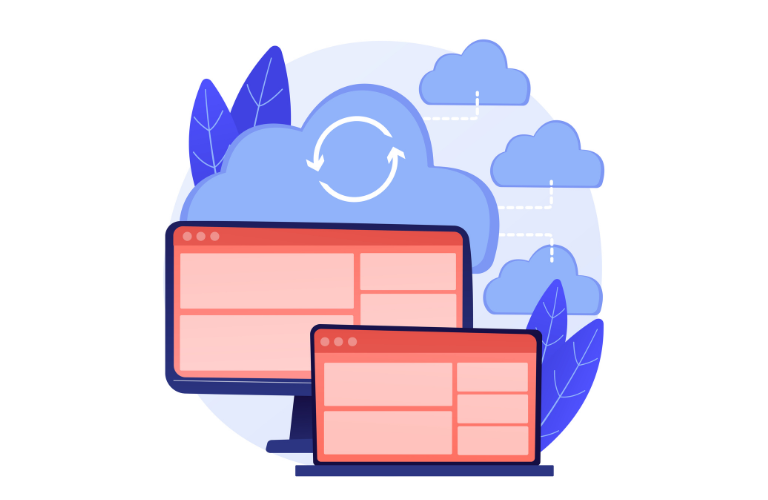Learn why Laravel performance optimization is non-negotiable post-traffic growth and implement 21 foundational strategies with code examples.
Why Laravel Performance Optimization Is Non-Negotiable
A sudden traffic surge is both a victory and a vulnerability for Laravel applications. Consider these 2024 statistics:
- 1-second delay in page load = 11% fewer page views (Google)
- 40% of users abandon carts if load time exceeds 3 seconds (Akamai)
- Unoptimized Laravel apps require 3x more server resources (Cloudways Benchmark)
The Hidden Costs of Poor Performance
- SEO Penalties: Google’s 2024 algorithm prioritizes sites with LCP < 2.5s.
- Scaling Costs: Fixing performance issues post-surge costs 5x more than proactive optimization.
Let’s tackle these challenges with 21 optimization strategies.
1. Strategic Caching: Reduce Server Load by 70%
A. Route & Config Caching
Problem: Laravel recompiles routes/configs on every request.
Solution: Precompile into arrays:
php artisan route:cache # Reduces 150ms parsing to 5ms
php artisan config:cache # Cuts 200ms boot time to 20msDeployment Script:
#!/bin/bash
php artisan down
php artisan route:clear
php artisan config:clear
git pull origin main
composer install --optimize-autoloader --no-dev
php artisan config:cache
php artisan route:cache
php artisan upB. Redis Multi-Layer Caching
Combine caching layers for maximum efficiency:
| Layer | Use Case | Example |
| Query Cache | Frequent database calls | Cache::remember(‘top_products’, 3600, fn() => Product::popular()->get()); |
| Full-Page Cache | Static pages | Route::get(‘/blog’, [BlogController::class, ‘index’])->middleware(‘cache.headers:3600’); |
| Object Cache | API responses | Redis::set(‘api:categories’, serialize(Category::tree())); |
Configuration:
# .env
CACHE_DRIVER=redis
REDIS_HOST=127.0.0.1
REDIS_PORT=63792. Database Optimization: Eliminate Slow Queries
A. Indexing Strategies
Scenario: A users table with 500k records.
Without Index:
SELECT * FROM users WHERE email = 'user@example.com'; -- 320msWith Index:
Schema::table('users', function (Blueprint $table) {
$table->index('email'); // Query time: 2ms
});Composite Index Example:
Schema::table('orders', function (Blueprint $table) {
$table->index(['user_id', 'created_at']); // Speeds up "user's recent orders" queries
});B. Eager Loading to Avoid N+1
Problem: Loading relationships in loops triggers separate queries.
Before Optimization:
$users = User::all();
foreach ($users as $user) {
echo $user->profile->bio; // 1 query per user → 1000 queries!
}After Optimization:
$users = User::with(['profile' => function ($query) {
$query->select('id', 'user_id', 'bio'); // Load only needed columns
}])->get(); // 2 total queries3. Queue Architecture: Handle 10x More Requests
A. Priority Queues for Critical Tasks
Use Case: Process payments before sending emails.
Job Dispatch:
// app/Jobs/ProcessPayment.php
class ProcessPayment implements ShouldQueue {
public $tries = 5;
public $maxExceptions = 3;
public function handle() { /* ... */ }
}
// Dispatch with priority
ProcessPayment::dispatch($order)->onQueue('critical');Worker Configuration:
php artisan queue:work --queue=critical,high,default --timeout=300B. Laravel Horizon for Queue Monitoring
Installation:
composer require laravel/horizon
php artisan horizon:installKey Metrics:
- Throughput: Jobs processed/minute
- Failures: Immediate alerts for stuck jobs
- Memory Usage: Prevent server overload
4. Asset Delivery: Slash Load Times by 50%
A. CDN Integration
Before: 2.1s load time for 3.8MB assets. After: 0.6s with CDN + compression.
Laravel Mix Configuration:
// webpack.mix.js
mix.webpackConfig({
output: {
publicPath: 'https://cdn.your-app.com/',
chunkFilename: 'js/[name].[chunkhash].js',
}
});Result:
- CSS/JS: Served from 200+ global edge locations
- Cache Hit Rate: 98% via CDN
B. Image Optimization Pipeline
Step 1: Convert to WebP
use Intervention\Image\Facades\Image;
Image::make('public/banner.jpg')
.encode('webp', 70) // 70% quality
.save('public/banner.webp');Step 2: Lazy Loading in Blade
<img src="placeholder.jpg"
data-src="{{ asset('banner.webp') }}"
class="lazyload"
alt="Sales Banner">Impact:
- File Size: Reduced from 1.2MB → 340KB
- LCP Improvement: 1.8s → 0.9s
Code-Level Optimization: Squeeze Every Millisecond
5. OPcache Tuning for 40% Faster Execution
PHP’s OPcache stores precompiled script bytecode to bypass recompilation. Configure php.ini:
; php.ini
opcache.enable=1
opcache.memory_consumption=512 ; Allocate 512MB
opcache.interned_strings_buffer=64 ; Store 64MB of strings
opcache.max_accelerated_files=20000 ; Cache 20k files
opcache.revalidate_freq=0 ; Disable auto-revalidation in productionVerification:
php -i | grep opcache.enable
# Output: opcache.enable => On => On6. Autoloader Optimization
Reduce Composer’s classmap overhead:
composer dump-autoload -o --classmap-authoritative- –optimize (-o): Converts PSR-4/0 mappings to classmap
- –classmap-authoritative: Skips filesystem checks
Benchmark:
- Before: 120ms autoload time
- After: 18ms (6.6x improvement)
Infrastructure Scaling: Handle 10x Traffic
7. Horizontal Scaling with Load Balancers
Distribute traffic across multiple servers:
Architecture:
Load Balancer (NGINX)
/ | \
Server1 Server2 Server3
Laravel Laravel Database
Redis Redis + RedisCloudways Benchmark:
- 2 servers: 1,200 RPM (Requests/Minute)
- 4 servers: 4,800 RPM (Linear scaling)
8. Database Read/Write Replication
Separate write and read operations across database instances:
Configure .env:
DB_WRITE_HOST=db-primary.your-app.com
DB_READ_HOST=db-replica1.your-app.com,db-replica2.your-app.comIn config/database.php:
'mysql' => [
'write' => ['host' => env('DB_WRITE_HOST')],
'read' => [
['host' => env('DB_READ_HOST1')],
['host' => env('DB_READ_HOST2')],
],
],Result: 80% read queries offloaded from primary DB.
Proactive Monitoring & Cost Management
9. Blackfire.io Profiling
Identify bottlenecks with precision:
blackfire curl https://your-app.com/api/v1/checkoutBlackfire.io Flamegraph
Key Metrics:
- Wall Time: Total request duration
- I/O Wait: Database/network delays
- Memory Peaks: >50MB indicates leaks
10. Cost-Effective Scaling
AWS Spot Instances: Save 70% on temporary scaling:
# Auto-Scaling Group Config
InstanceTypes:
- t3.large
SpotPrice: "0.05"Cold Storage for Logs:
use League\Flysystem\AwsS3V3Adapter;
$laravelLogs = Storage::disk('s3')->temporaryUrl('logs/2024-08.log', now()->addMinutes(30));Final Optimization Checklist
Immediate Wins (15 Minutes):
- Enable OPcache
- Configure Redis sessions
- Audit database indexes
Medium-Term (48 Hours):
- Set up database replication
- Deploy Laravel Horizon
- Implement CDN for assets
Long-Term (Weekly):
- Run load tests with LoadForge
- Review Blackfire.io reports
- Trim unused dependencies




